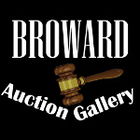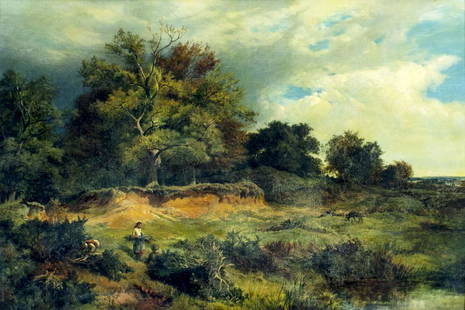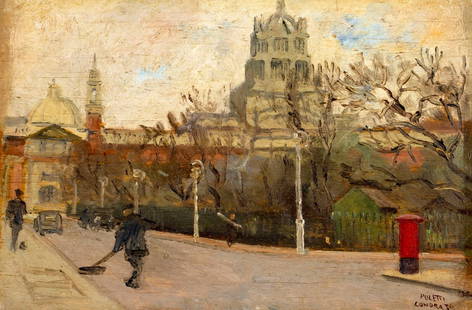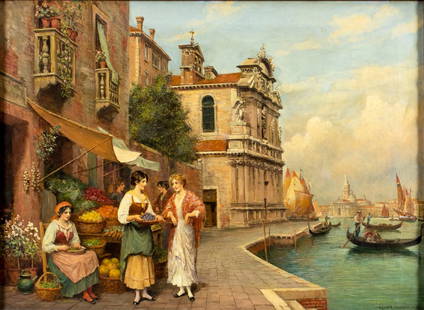
Ralph Peacock (UK,1868-1946) oil painting
Similar Sale History
View More Items in Paintings

Related Paintings
More Items in English Paintings
View MoreRecommended Art
View More


















Item Details
Description
ARTIST: Ralph Peacock (United Kingdom, 1868 - 1946)
NAME: Sitting Girl
MEDIUM: oil on canvas
CONDITION: Some craquelure. Some yellowing of varnish. Minor paint losses. No visible inpaint under UV light.
SIGHT SIZE: 39 x 34 inches / 99 x 86 cm
FRAME SIZE: unframed
SIGNATURE: lower left
CATEGORY: antique vintage painting
SKU#: 117019
US Shipping $120 + insurance.
AD: ART CONSIGNMENTS WANTED. CONTACT US
BIOGRAPHY:
Ralph Peacock was briefly well-known for his cover designs and illustrations for several of G.A. Henty's novels in the 1890s. However, his main interest was painting, and he went on to have a long and successful career as a portrait painter, although he is more or less forgotten today.
He was born on 14 August 1868 in Wood Green, north London, and baptized at St. Michael's Church, Wood Green, on 13 September 1868. His father, Thomas Peacock (1828-1905) was a Superintendent at the Inland Revenue at Somerset House (having begun his working life as an assistant to a chandelier
maker). His mother, Josephine Henrietta Miles (1842-1921) was the daughter of a dentist. They had married in St. Pancras Old Church on 27 June 1863, and Ralph was the second of their eight children. (Two of his brothers died, both aged 8, in 1878 and 1882.)
At the time of the 1871 census the family was living in Bounds Green Road, Tottenham. Ten years later, they had moved south of the river, to 10 Church Terrace, Battersea.
Ralph was educated at the City of London School, which was then on the Victoria Embankment in Blackfriars. In 1882, aged just 14, he also began studying for two evenings a week at the South London Technical School of Art in Kennington Park Road, (formerly the Lambeth School of Art), encouraged by his
father, who studied in the same class.
Ralph was actually being prepared for a career in the Civil Service, to follow in his father's footsteps, but in 1886 the Scottish painter John Pettie, who had seen one of his portraits, persuaded his father that he should aim to be a professional artist. He subsequently spent a year at the St. John's Wood School
of Art (at which he later taught for several years), and then, in 1887, he became a student at the Royal Academy Schools, exhibiting his first painting at the Royal Academy a year later (and his second in 1889).
In 1890, by which time he and his parents had moved to 6 Park Road, Forest Hill, he was awarded the Creswick Prize for landscape painting and a silver medal for life drawing. The following year he was awarded a British Institute Scholarship worth ВЈ50 a year for two years, and in 1891, while he was still
living with his family at 6 Park Road, Sydenham, Kent, he was awarded a Royal Academy Gold Medal and a traveling scholarship worth ВЈ200 for his historical painting Victory, which showed a woman pleading to a Gaul on behalf of a captured Roman soldier.
He then travelled extensively abroad for around a year, visiting Tangier, Spain, Italy and Switzerland, and on his return to England he began his brief career as an illustrator while at the same time working as a painter.
One of his early interests was historical subjects, and his first black and white illustrations appeared in Robert Leighton's Olaf the Glorious: A Historical Story of the Viking Age, published by Blackie and Son in 1894, and in G.A. Henty's Wulf the Saxon: A Story of the Norman Conquest, also published by Blackie
in 1894 (although the first UK edition is dated 1895). He went on to design the covers for Henty's At Agincourt: A Tale of the White Hoods of Paris (1897), A March on London: Being a Story of Wat Tyler's Insurrection (1898), On the Irrawaddy: A Story of the First Burmese War (1898), and Under
Wellington's Command: A Tale of the Peninsular War (1899) becoming one of the few illustrators at this time to be recognised for their cover designs.
His work also appeared in a number of periodicals during the 1890s some of his paintings were reproduced in The Graphic, The Illustrated London News, Black and White, The Art Journal and The Sketch, and he also contributed original drawings to Cassell's Family Magazine, Ally Sloper's Half Holiday, the
English Illustrated Magazine and The London Magazine. Some of his work was signed "Ralph Peacock," while other work was signed simple "R. P."
In the meantime he was also exhibiting regularly. His work appeared in the Royal Academy every year between 1892 and 1929, although, despite his technical abilities and his popularity as a painter, he was never made an associate of the Royal Academy, let alone a member. In 1898, he won a gold medal at
the International Art Exhibition in Vienna, and he also exhibited with the British Institution, the Royal Institute of Portrait Painters, the Royal Society of British Artists, The Royal Institute of Painters in Oils, and in public and commercial galleries throughout the UK.
By 1893 Ralph had moved out of his parents home and was living at 11 Holland Park Road, Kensington. In 1901, he married Edith Emma Brignall, at St. Mary's Church, Beddington, Surrey. Born on 20 February 1873 in Upper Norwood, South London, she was the daughter of James Brignall, a corn merchant,
and his wife Emma. In 1900, Ralph had painted Edith, along with her younger sister Ethel, in what became one of his best-known portraits, The Sisters, which is now owned by the Tate.
His work continued to occasionally appear in periodicals articles about him and examples of his work appeared in The Studio in 1901 and The Windsor Magazine in 1907, and his work also featured in The Strand Magazine, The Sphere and The Sketch.
By 1911, he was sufficiently well-off to afford three servants. He travelled to Amerca at least four times between 1921 and 1930, and on his return after his last journey moved to 1A Palace Gate, Kensington. A year or so later, he moved to The Gate House, Ellerton Road, Wimbledon. He was still working at
the time of the 1939 Register, when he was recorded simply as a portrait painter, and employing a chauffeur and a cook.
In an essay accompanying an exhibition, "Forgotten Faces," at the Tate Gallery in 2014, it was noted that while Ralph Peacock was the darling of art critics at the onset of his career, after the First World War his inspiration seems to have dried up, and appreciation of his work declined after the First World
War.
His wife died, at St. Andrew's Hospital, Northampton, on 21 July 1945. Ralph Peacock himself died, at his home in Ellerton Road, on 17 January 1946, suggesting that while he may have been forgotten by art critics, his work had remained popular with the art-buying public.
NAME: Sitting Girl
MEDIUM: oil on canvas
CONDITION: Some craquelure. Some yellowing of varnish. Minor paint losses. No visible inpaint under UV light.
SIGHT SIZE: 39 x 34 inches / 99 x 86 cm
FRAME SIZE: unframed
SIGNATURE: lower left
CATEGORY: antique vintage painting
SKU#: 117019
US Shipping $120 + insurance.
AD: ART CONSIGNMENTS WANTED. CONTACT US
BIOGRAPHY:
Ralph Peacock was briefly well-known for his cover designs and illustrations for several of G.A. Henty's novels in the 1890s. However, his main interest was painting, and he went on to have a long and successful career as a portrait painter, although he is more or less forgotten today.
He was born on 14 August 1868 in Wood Green, north London, and baptized at St. Michael's Church, Wood Green, on 13 September 1868. His father, Thomas Peacock (1828-1905) was a Superintendent at the Inland Revenue at Somerset House (having begun his working life as an assistant to a chandelier
maker). His mother, Josephine Henrietta Miles (1842-1921) was the daughter of a dentist. They had married in St. Pancras Old Church on 27 June 1863, and Ralph was the second of their eight children. (Two of his brothers died, both aged 8, in 1878 and 1882.)
At the time of the 1871 census the family was living in Bounds Green Road, Tottenham. Ten years later, they had moved south of the river, to 10 Church Terrace, Battersea.
Ralph was educated at the City of London School, which was then on the Victoria Embankment in Blackfriars. In 1882, aged just 14, he also began studying for two evenings a week at the South London Technical School of Art in Kennington Park Road, (formerly the Lambeth School of Art), encouraged by his
father, who studied in the same class.
Ralph was actually being prepared for a career in the Civil Service, to follow in his father's footsteps, but in 1886 the Scottish painter John Pettie, who had seen one of his portraits, persuaded his father that he should aim to be a professional artist. He subsequently spent a year at the St. John's Wood School
of Art (at which he later taught for several years), and then, in 1887, he became a student at the Royal Academy Schools, exhibiting his first painting at the Royal Academy a year later (and his second in 1889).
In 1890, by which time he and his parents had moved to 6 Park Road, Forest Hill, he was awarded the Creswick Prize for landscape painting and a silver medal for life drawing. The following year he was awarded a British Institute Scholarship worth ВЈ50 a year for two years, and in 1891, while he was still
living with his family at 6 Park Road, Sydenham, Kent, he was awarded a Royal Academy Gold Medal and a traveling scholarship worth ВЈ200 for his historical painting Victory, which showed a woman pleading to a Gaul on behalf of a captured Roman soldier.
He then travelled extensively abroad for around a year, visiting Tangier, Spain, Italy and Switzerland, and on his return to England he began his brief career as an illustrator while at the same time working as a painter.
One of his early interests was historical subjects, and his first black and white illustrations appeared in Robert Leighton's Olaf the Glorious: A Historical Story of the Viking Age, published by Blackie and Son in 1894, and in G.A. Henty's Wulf the Saxon: A Story of the Norman Conquest, also published by Blackie
in 1894 (although the first UK edition is dated 1895). He went on to design the covers for Henty's At Agincourt: A Tale of the White Hoods of Paris (1897), A March on London: Being a Story of Wat Tyler's Insurrection (1898), On the Irrawaddy: A Story of the First Burmese War (1898), and Under
Wellington's Command: A Tale of the Peninsular War (1899) becoming one of the few illustrators at this time to be recognised for their cover designs.
His work also appeared in a number of periodicals during the 1890s some of his paintings were reproduced in The Graphic, The Illustrated London News, Black and White, The Art Journal and The Sketch, and he also contributed original drawings to Cassell's Family Magazine, Ally Sloper's Half Holiday, the
English Illustrated Magazine and The London Magazine. Some of his work was signed "Ralph Peacock," while other work was signed simple "R. P."
In the meantime he was also exhibiting regularly. His work appeared in the Royal Academy every year between 1892 and 1929, although, despite his technical abilities and his popularity as a painter, he was never made an associate of the Royal Academy, let alone a member. In 1898, he won a gold medal at
the International Art Exhibition in Vienna, and he also exhibited with the British Institution, the Royal Institute of Portrait Painters, the Royal Society of British Artists, The Royal Institute of Painters in Oils, and in public and commercial galleries throughout the UK.
By 1893 Ralph had moved out of his parents home and was living at 11 Holland Park Road, Kensington. In 1901, he married Edith Emma Brignall, at St. Mary's Church, Beddington, Surrey. Born on 20 February 1873 in Upper Norwood, South London, she was the daughter of James Brignall, a corn merchant,
and his wife Emma. In 1900, Ralph had painted Edith, along with her younger sister Ethel, in what became one of his best-known portraits, The Sisters, which is now owned by the Tate.
His work continued to occasionally appear in periodicals articles about him and examples of his work appeared in The Studio in 1901 and The Windsor Magazine in 1907, and his work also featured in The Strand Magazine, The Sphere and The Sketch.
By 1911, he was sufficiently well-off to afford three servants. He travelled to Amerca at least four times between 1921 and 1930, and on his return after his last journey moved to 1A Palace Gate, Kensington. A year or so later, he moved to The Gate House, Ellerton Road, Wimbledon. He was still working at
the time of the 1939 Register, when he was recorded simply as a portrait painter, and employing a chauffeur and a cook.
In an essay accompanying an exhibition, "Forgotten Faces," at the Tate Gallery in 2014, it was noted that while Ralph Peacock was the darling of art critics at the onset of his career, after the First World War his inspiration seems to have dried up, and appreciation of his work declined after the First World
War.
His wife died, at St. Andrew's Hospital, Northampton, on 21 July 1945. Ralph Peacock himself died, at his home in Ellerton Road, on 17 January 1946, suggesting that while he may have been forgotten by art critics, his work had remained popular with the art-buying public.
Buyer's Premium
- 25%
Ralph Peacock (UK,1868-1946) oil painting
Estimate $4,750 - $5,250
4 bidders are watching this item.
Get approved to bid.
Shipping & Pickup Options
Item located in Dania Beach, FL, us$120 shipping in the US
Local Pickup Available
Payment
Accepts seamless payments through LiveAuctioneers

TOP


















































































